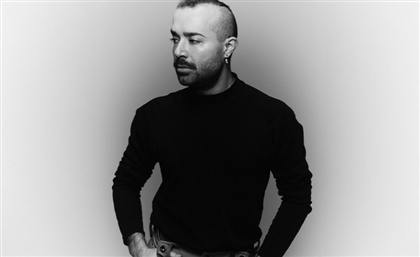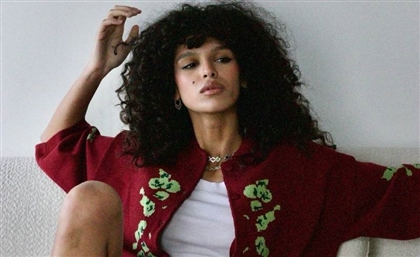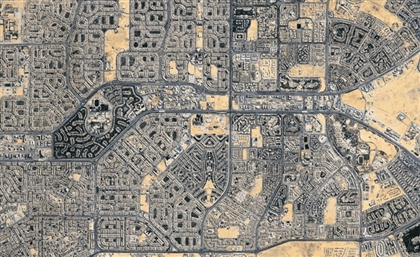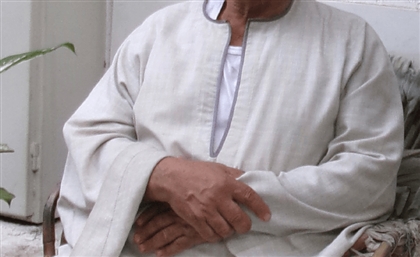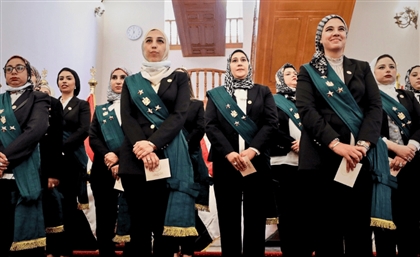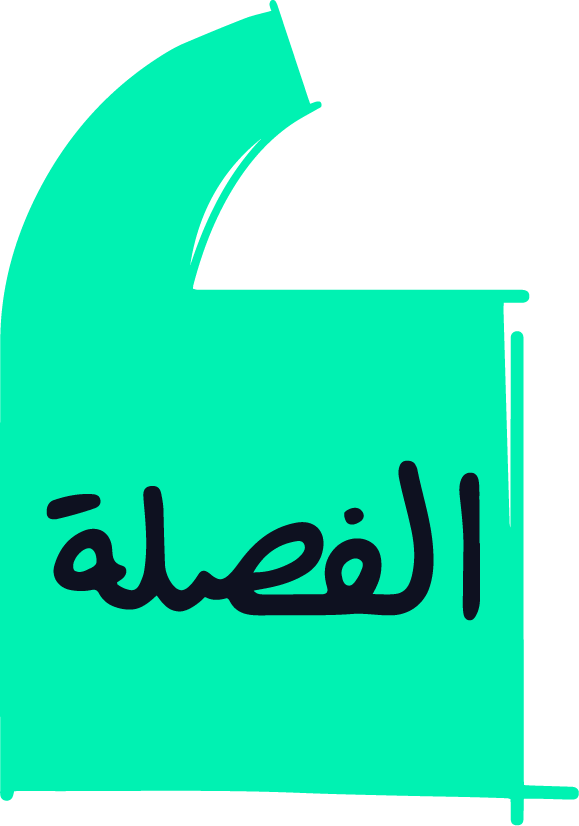Inside the Emotional Armor & ‘Amoural’ of Egyptian Label HaledLena
HaledLena is what happens when two creatives used to working behind the scenes decide to step into the spotlight.
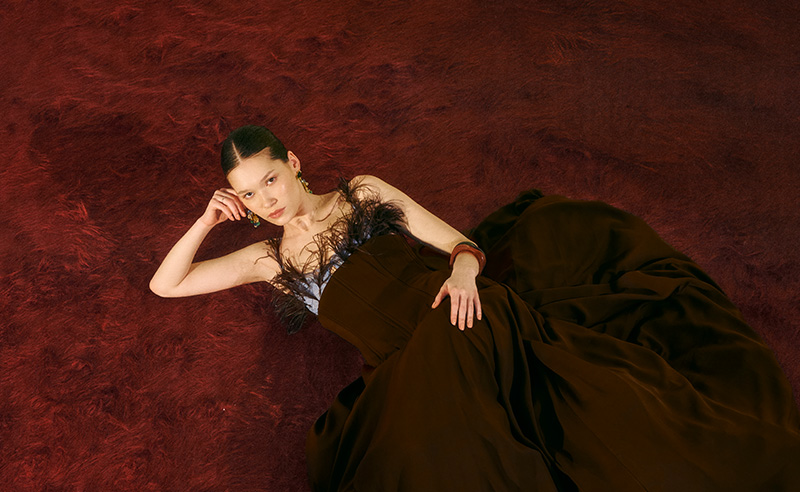
Originally Published June 14th, 2025
A stylist and a makeup artist walk into a brand. Of course nobody is telling any jokes here - storming onto the scene like an ode to maximalism, HaledLena is already taking up space in the Egyptian fashion world. Sharp-shouldered coats, liquid silks, and layers that unfold like a well-kept secret, every piece walks the tightrope between power and vulnerability.
HaledLena fits within the realm of contemporary high fashion. With its sculptural silhouettes, tactile and gauzy textures, and poetic presentation, the Egyptian fashion house sits somewhere between luxury prêt-à-porter and couture. It’s a melting pot of conceptual design and dramatic tailoring, making it feel more like a fashion house than just a clothing brand.
Founded by Khalid Farid, a stylist with an obsession for shape and mood, and Lina Abosreea, an editorial makeup artist turned managing director, they weren’t looking to create another trend-driven label. Instead, they built something around an archive of identity and a refusal to separate emotion from design. They named it HaledLena, based on a nickname their friends used long before it was ever printed on a label. “We’ve always been a unit,” Farid, the designer of Haledlena, says. “This was just a way to make it official.”
Farid and Abosreea are no strangers to the world of beauty and fashion. Farid has long worked behind the scenes styling others for labels like Okhtein, Dkhoon AlEmiratia, Maghrabi, Fama, while Abosreea’s makeup brushes have painted countless editorial faces for labels like Ritmo Apparel, Be Indie, By Reema AlShohaib, and Beymen. However, HaledLena is where they decided to step out from the background and tell their own story. “I told Lina, my biggest supporter, about a collection I created a year ago and my dream of starting a brand,” Farid says. “The very next day, she called me and said, ‘I’m in. Let’s register the brand and do this properly.’”
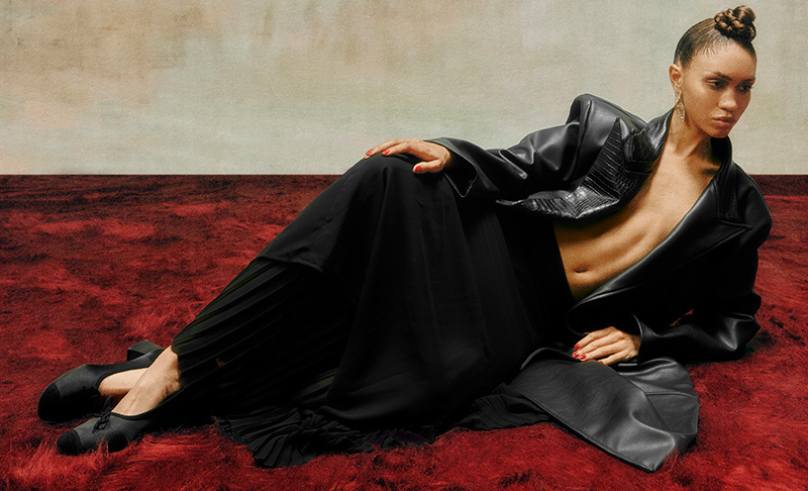 HaledLena wears Farid’s mother's name like a shield, and taps into her memory as an endless pool of inspiration. The draped silhouettes, the exaggerated shoulders, the way structure and ease coexist— it’s all her. “Yasmin, my mother, didn’t follow a formula,” he explains. “She threw things together in a way that shouldn’t have worked, but always did. I didn’t even realise it was called ‘maximalism’ until years later.”
HaledLena wears Farid’s mother's name like a shield, and taps into her memory as an endless pool of inspiration. The draped silhouettes, the exaggerated shoulders, the way structure and ease coexist— it’s all her. “Yasmin, my mother, didn’t follow a formula,” he explains. “She threw things together in a way that shouldn’t have worked, but always did. I didn’t even realise it was called ‘maximalism’ until years later.”
Somewhere in his mind, his mother is still draped in a riot of prints—leopard, paisley, and gold-threaded florals—stacked in bangles up to her elbows, moving her hands in animation with a flick of red-polished nails, a glow bouncing off her oversized sunglasses. “It’s impossible to capture her or her style in even the largest book.”
Growing up without a TV, while other kids were glued to cartoons, Khalid was left to invent his own world. “I remember complaining to my mom about it, and she told me, ‘Maybe you’re meant to be different, maybe you’re on the edge.’ I said, ‘No child is meant to be on the edge—I just want to watch TV!’ And she smiled and said, ‘Then play. Be the first kid who is both a child and on the edge.’” So he did. Instead of sitting in front of a screen, he began designing.
As Farid puts it simply: “If I don’t love, I don’t create. It’s as simple as that.” Part of Farid’s charm— both as a designer and as a person— is the very thing he never shies away from: his instinct to romanticize the past, to stitch nostalgia into the present, and to see time not as something that slips away, but as something to be layered, folded, and draped into everything he creates. “I know saying that might sound unprofessional,” he admits, “but I’ve always believed that artists who work with their genuine hearts are guided by their feelings.”
-4227505e-e617-417c-b8d0-c4c07d5d8a10.jpg) Although still in its early chapters, the label doesn’t tiptoe around experimentation— it leans all the way in. The brand operates like a world of its own, where contradictions are stitched in on purpose. The draping is almost defiant, as if each fold was placed with intention rather than by accident. Suits aren’t just suits; they’re sharp but softened with sheer overlays, their shoulders sculpted to command space while the fabric moves like liquid. Skirts exist in multiple timelines at once— mini but pleated into something longer, structured yet weightless, raw but refined.
Although still in its early chapters, the label doesn’t tiptoe around experimentation— it leans all the way in. The brand operates like a world of its own, where contradictions are stitched in on purpose. The draping is almost defiant, as if each fold was placed with intention rather than by accident. Suits aren’t just suits; they’re sharp but softened with sheer overlays, their shoulders sculpted to command space while the fabric moves like liquid. Skirts exist in multiple timelines at once— mini but pleated into something longer, structured yet weightless, raw but refined.
If HaledLena were a sentence, The Amoural Collection would be its opening line; an introduction to the brand’s language of contradiction. This is a collection that doesn’t settle. Nothing here feels overly pristine, or safe from experimentation; textures are played with, fabrics are layered like an archive of emotion, and silhouettes are a study in contrast. Leather coats with exaggerated lapels hang heavy against the skin, while sheer skirts layer over more rigid structures, revealing softness beneath. There’s an intentional distortion to it all, as if time itself has been manipulated within the seams.
Couture gowns in ‘The Amoural’ take on a sculptural presence. One dress, ‘The Amoural Éclat Dress’, corseted and feather-trimmed, cinches the waist before dramatically ballooning at the hem. Another, ‘The Amoural Desert Mirage Gown’, wrapped in deep maroon folds, carries the raw, crinkled texture of something that has lived, a garment that almost looks like it’s been unearthed rather than designed. The couture line plays around even more with elements like sculptural metalwork, extended trains, corseted bodies, ruching, and gathered fabrics.
-c3600c00-094f-4380-b9f0-22f6e33eab5a.jpg) There’s something cinematic about it all— like a film still frozen mid-scene, where a structured coat swallows its wearer just enough to make them look like a someone stepping into their own power. In the shoot, models lounge, lean, and drape themselves like characters caught mid-thought, in a setting that feels more like a dream sequence than a traditional fashion shoot. In one frame, a model lies effortlessly in a sweeping gown, as if resting between scenes. In another, a pair plays tawla (backgammon), black gloves still on, as if to remind us that elegance and play are not mutually exclusive.
There’s something cinematic about it all— like a film still frozen mid-scene, where a structured coat swallows its wearer just enough to make them look like a someone stepping into their own power. In the shoot, models lounge, lean, and drape themselves like characters caught mid-thought, in a setting that feels more like a dream sequence than a traditional fashion shoot. In one frame, a model lies effortlessly in a sweeping gown, as if resting between scenes. In another, a pair plays tawla (backgammon), black gloves still on, as if to remind us that elegance and play are not mutually exclusive.
If there’s one thing HaledLena refuses to do, it’s to squeeze into a box—especially a gendered one. Many of their pieces, like the oversized Pointu coat, are intentionally gender-fluid. “We never wanted to make ‘menswear’ or ‘womenswear’—just wear,” Farid says. “Pieces that make you feel like your full self, whatever that looks like.” HaledLena doesn’t just challenge stereotypes; it ignores them altogether. Oversized tailoring? Meant to make you feel powerful. Transparent layers? To show that strength can coexist with softness.
The maroon layered skirt, the one that shifts from sheer to pleated to sculptural, is Abosreea’s favourite. “It’s sexy, but it’s also fragile,” she says. “You feel exposed and protected at the same time.” Then there’s the maroon gown, the one Farid holds closest. “My mother always said, ‘If you wear something without ironing it, it’s like you pulled it from a dog’s mouth,’” he laughs. “It was funny, but she meant it. She cared about elegance in every moment.”
Trending This Week
-
Aug 29, 2025







